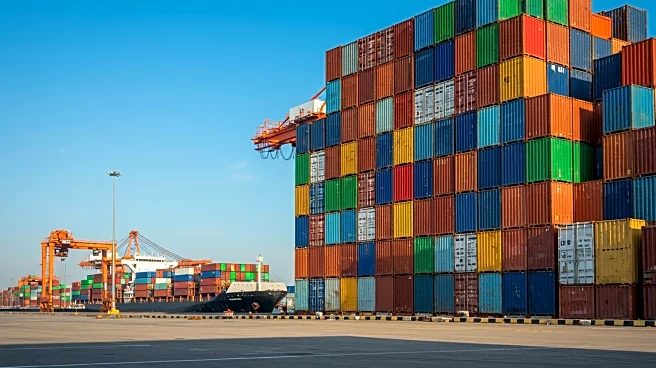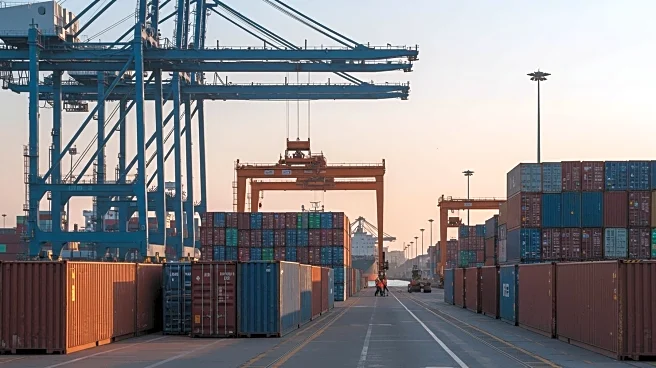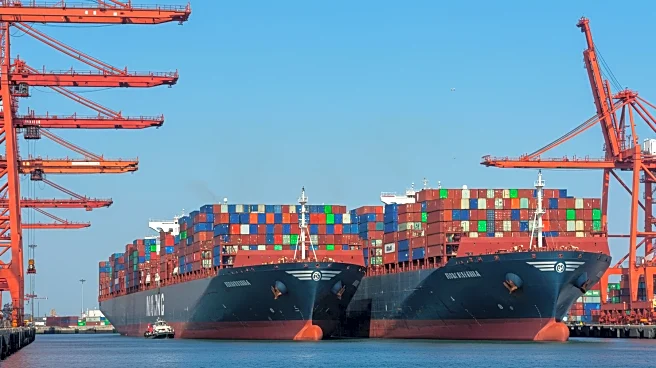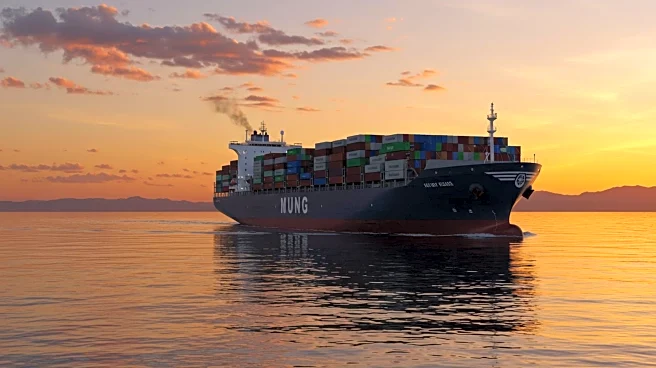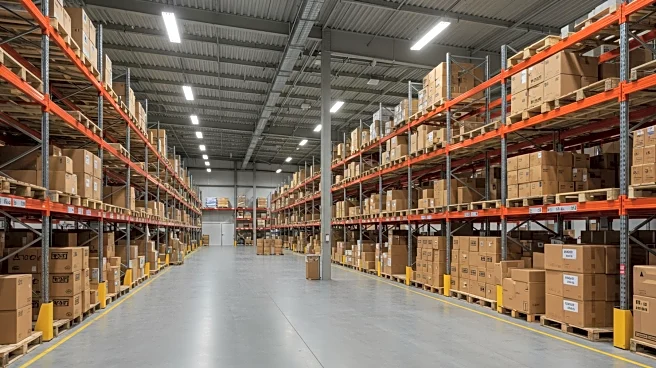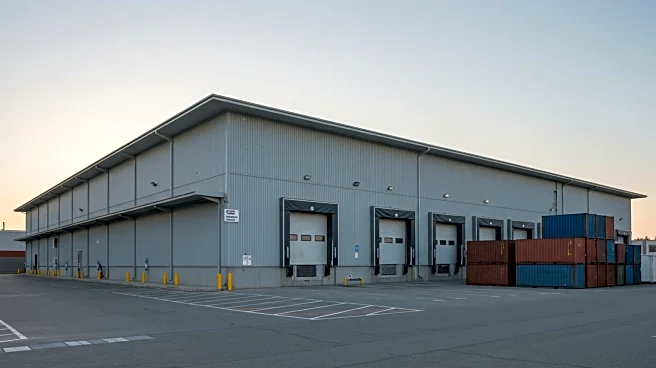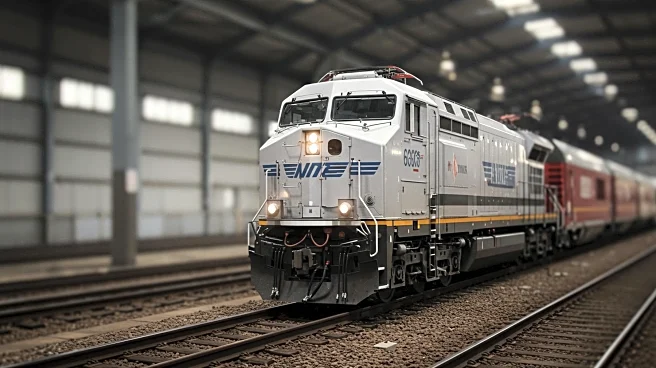What's Happening?
The Port of Los Angeles reported its busiest month ever in July, handling 1,019,837 Twenty-Foot Equivalent Units (TEUs), marking an 8.5% increase compared to the previous year. This surge in activity is attributed to retailers and manufacturers accelerating their import schedules to avoid anticipated tariff hikes later in the year. Gene Seroka, Executive Director of the Port, highlighted the efficiency of port operations, crediting longshore workers, terminal operators, and other supply chain partners for managing the increased cargo without delays. The port saw a significant rise in loaded imports, reaching 543,728 TEUs, and loaded exports at 121,507 TEUs, both setting new records. Additionally, the port processed 354,602 empty container units, a 10% increase from last year.
Why It's Important?
The record-breaking activity at the Port of Los Angeles underscores the impact of tariff concerns on U.S. trade dynamics. As businesses rush to import goods ahead of potential tariff increases, the logistics and supply chain sectors face heightened demand and operational pressure. This development could influence pricing strategies, inventory management, and transportation planning across industries reliant on international trade. The port's ability to handle increased volumes efficiently is crucial for maintaining the flow of goods and supporting economic stability. Stakeholders in retail, manufacturing, and logistics may experience shifts in cost structures and supply chain strategies as they adapt to these changes.
What's Next?
As tariff discussions continue, businesses may further adjust their import strategies, potentially leading to sustained high activity at major ports like Los Angeles. The logistics sector might see increased investment in infrastructure and technology to accommodate growing demands. Policymakers and industry leaders will likely monitor these trends closely, considering potential regulatory adjustments or support measures to ensure smooth operations. The ongoing tariff situation could also prompt broader discussions on trade policy and its implications for U.S. economic competitiveness.
